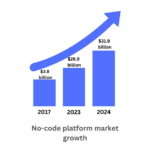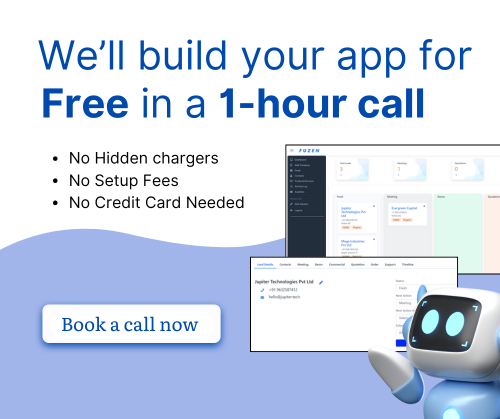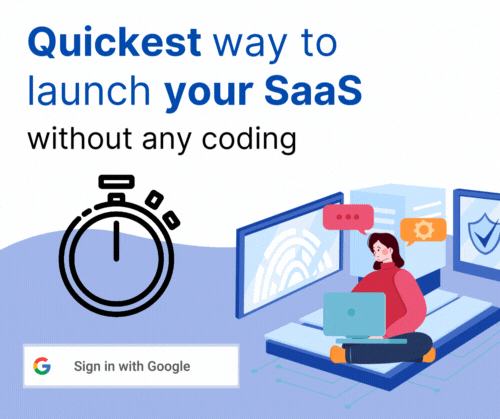When it comes to SaaS applications, the backbone of success lies in a robust and well-structured backend.
The backend, often hidden from the user's eye, is the engine that powers seamless functionality, data storage, and overall performance. In this era of innovation, the advent of no-code solutions has revolutionized the way we build applications, including the backend. However, not all no-code platforms are created equal.
In this post, we will explore what makes a better no code backend for SaaS apps and why Fuzen stands out as the ideal no-code backend solution.
Why Backend Data Structure is Crucial for SaaS Apps
Backend data structure might sound technical, but it's the backbone of SaaS apps, playing a vital role in their functionality and reliability. Here’s why it’s so crucial for SaaS applications.
1. Efficient Data Management
In a SaaS app, tons of data flow in and out constantly. A well-designed backend structure ensures this data is organized logically. It helps in quick retrieval and efficient management, making the app responsive and reliable for users.
2. Scalability
As SaaS apps grow, so does their user base and data volume. A robust backend structure accommodates this growth seamlessly. It’s like having a building foundation that can support additional floors without collapsing. This scalability ensures the app remains fast and functional even with increased usage.
3. Security Measures
Data breaches are nightmares for any app. A strong backend structure includes security measures like encryption, user authentication, and access controls. It acts as a fortress guarding sensitive user information from unauthorized access or cyber threats.
4. Faster Performance
Users expect speed. An optimized backend structure contributes significantly to the app’s speed and responsiveness. It ensures that actions like loading pages, retrieving information, and processing requests happen swiftly, providing a smoother experience for users.
5. Adaptability
SaaS apps often evolve with new features or updates. A well-structured no code backend should allow easier integration of new functionalities without disrupting the existing system. It’s like adding new rooms to a house without tearing down the entire structure.
6. Analytics and Insights
Data isn’t just stored; it’s also used to derive insights. A well-organized backend facilitates data analytics. It enables the extraction of valuable information, helping businesses make informed decisions based on user behavior, trends, and preferences.
7. Improved User Experience
Ultimately, a solid backend structure contributes to a better user experience. When everything runs smoothly behind the scenes, users interact seamlessly with the app, enhancing satisfaction and loyalty.
Limitations of No-Code Apps in Building a Robust Backend
While no-code platforms have democratized app development, they come with inherent limitations, especially when it comes to constructing a robust backend. Let's explore some common challenges:
- Inadequate Data Connections: No-code platforms may fall short when it comes to establishing complex data connections or associations between different data sets. This limitation can hinder the functionality and efficiency of your SaaS app.
- Lack of Customization: Many no-code solutions offer a one-size-fits-all approach, limiting the ability to customize the backend according to the unique requirements of your SaaS application.
- Hidden Complexities: The simplicity of no-code can be deceiving. Some platforms abstract the underlying complexities, making it challenging to understand or troubleshoot issues related to the backend.
- Scalability Challenges: As a SaaS app grows, scalability becomes a critical aspect. No-code platforms might hit a ceiling in handling increased user loads or expanding functionalities. Building a scalable backend often requires intricate control and optimization.
- Integration Complexity: Integrating with external services or APIs is a common requirement for SaaS apps. No-code tools might struggle with complex integrations due to limitations in accessing or manipulating data at the backend level.
Ideal No-Code Backend for SaaS Apps
In the quest for an ideal no code backend solution for SaaS apps, certain key criteria must be met to ensure reliability, seamless data connections, and user-friendly functionality.

Reliability
A robust no code backend should prioritize reliability by preventing data duplications and inadvertent deletions. This involves implementing safeguards to ensure that data remains accurate, consistent, and free from unintentional modifications.
Data Connections
An ideal no code backend must excel in creating and managing data connections or associations between different entities. This capability is crucial for building comprehensive and interconnected SaaS applications.
Simplicity without Sacrificing Functionality
Simplicity should not come at the cost of functionality. An ideal no-code backend strikes the right balance, providing a user-friendly experience without compromising on the ability to create complex and sophisticated data structures.
Building Your Backend with Fuzen No Code
Now that we've identified the key characteristics of an ideal no code backend, let's explore how Fuzen addresses these requirements and simplifies the process of building a robust backend for your SaaS app.
Reliability Assurance
Fuzen prioritizes data integrity by embedding mechanisms that prevent duplicate records and accidental deletions. Its user-friendly design caters to both technical and non-technical users, minimizing the chances of errors and ensuring a reliable backend.
Seamless Data Connections
The platform’s prowess lies in its powerful data modeling capabilities. Fuzen allows the effortless establishment of diverse data relationships – be it one-to-one, one-to-many, or many-to-many connections.
This flexibility enables users to craft a backend that perfectly aligns with their SaaS app’s unique requirements.
Simplified Complexity
Fuzen embodies a no-code philosophy with its simple yet powerful interface. Users can architect intricate backend structures without extensive coding knowledge.
Data Validation and Constraints:
Fuzen goes beyond simplicity by incorporating robust data validation and constraints. Users can define rules and conditions to ensure data accuracy, preventing errors and inconsistencies within the backend.
Automated Relationships:
Creating relationships between different data entities is simplified with Fuzen. The platform intelligently detects and suggests potential relationships, streamlining the process and reducing the likelihood of errors in data connections.
Conclusion
In the sphere of SaaS apps, a strong backend is the engine driving success. No-code platforms have reshaped how we build these backends, but not all can meet the demands.
Fuzen stands out as a top choice for creating robust SaaS backends. Its intuitive design, focus on data integrity, and easy data connections make it a standout. Fuzen simplifies complex backend creation for both tech and non-tech users, ensuring reliability and scalability.




